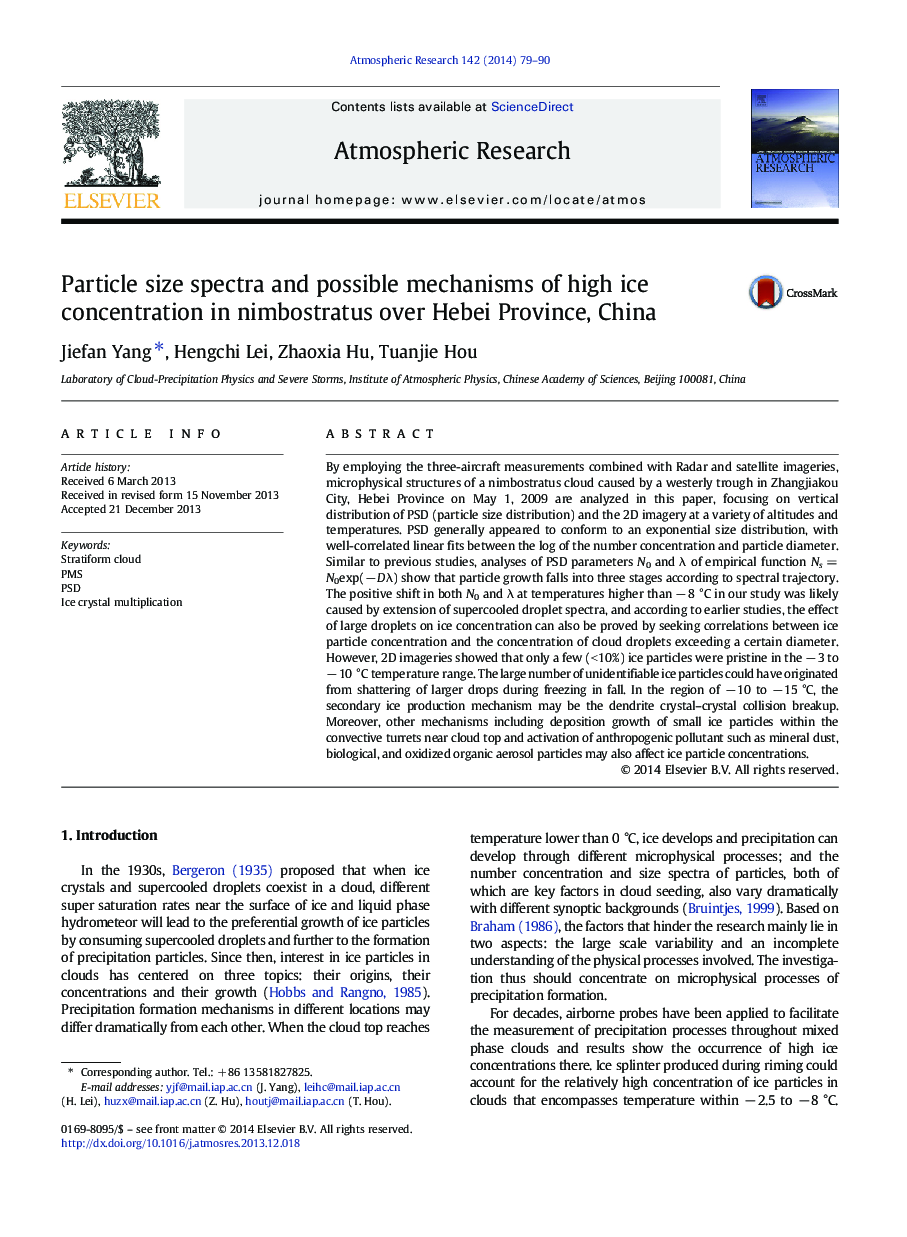| کد مقاله | کد نشریه | سال انتشار | مقاله انگلیسی | نسخه تمام متن |
|---|---|---|---|---|
| 6343487 | 1620529 | 2014 | 12 صفحه PDF | دانلود رایگان |
عنوان انگلیسی مقاله ISI
Particle size spectra and possible mechanisms of high ice concentration in nimbostratus over Hebei Province, China
ترجمه فارسی عنوان
طیف اندازه ذرات و مکانیزم های احتمالی غلظت یخ در نیمبتوراتوس در استان هبی، چین
دانلود مقاله + سفارش ترجمه
دانلود مقاله ISI انگلیسی
رایگان برای ایرانیان
موضوعات مرتبط
مهندسی و علوم پایه
علوم زمین و سیارات
علم هواشناسی
چکیده انگلیسی
By employing the three-aircraft measurements combined with Radar and satellite imageries, microphysical structures of a nimbostratus cloud caused by a westerly trough in Zhangjiakou City, Hebei Province on May 1, 2009 are analyzed in this paper, focusing on vertical distribution of PSD (particle size distribution) and the 2D imagery at a variety of altitudes and temperatures. PSD generally appeared to conform to an exponential size distribution, with well-correlated linear fits between the log of the number concentration and particle diameter. Similar to previous studies, analyses of PSD parameters N0 and λ of empirical function Ns = N0exp(â Dλ) show that particle growth falls into three stages according to spectral trajectory. The positive shift in both N0 and λ at temperatures higher than â 8 °C in our study was likely caused by extension of supercooled droplet spectra, and according to earlier studies, the effect of large droplets on ice concentration can also be proved by seeking correlations between ice particle concentration and the concentration of cloud droplets exceeding a certain diameter. However, 2D imageries showed that only a few (< 10%) ice particles were pristine in the â 3 to â 10 °C temperature range. The large number of unidentifiable ice particles could have originated from shattering of larger drops during freezing in fall. In the region of â 10 to â 15 °C, the secondary ice production mechanism may be the dendrite crystal-crystal collision breakup. Moreover, other mechanisms including deposition growth of small ice particles within the convective turrets near cloud top and activation of anthropogenic pollutant such as mineral dust, biological, and oxidized organic aerosol particles may also affect ice particle concentrations.
ناشر
Database: Elsevier - ScienceDirect (ساینس دایرکت)
Journal: Atmospheric Research - Volume 142, 1 June 2014, Pages 79-90
Journal: Atmospheric Research - Volume 142, 1 June 2014, Pages 79-90
نویسندگان
Jiefan Yang, Hengchi Lei, Zhaoxia Hu, Tuanjie Hou,
